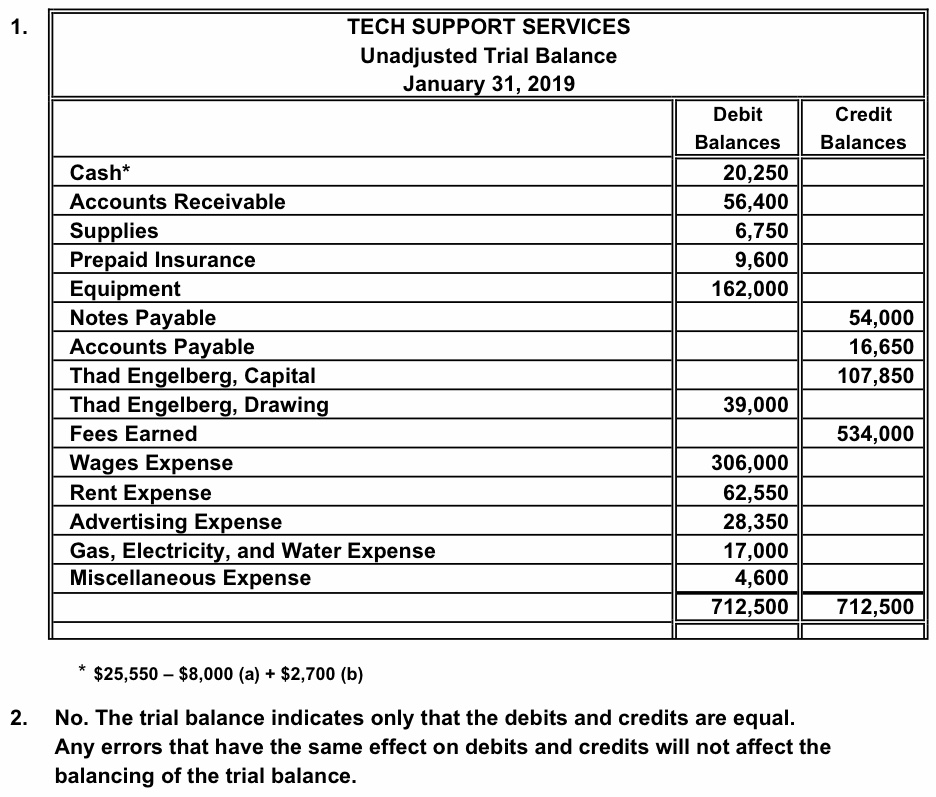Bookkeeping
Unadjusted trial balance: Definition, preparation and example

You can do this by either totaling the last period’s closing balances or you can enter balances as of the 1st day of this period. Accountants also use this early trial balance to find problems like missing information or numbers that don’t match up. They know that getting this part right is super important for the rest of their work. Every entry must have proper documentation and source references to maintain accuracy and meet accounting standards.
Equal Doesn’t Always Mean Correct

The beginning trial balance or unadjusted trial balance simply lists the unadjusted balances for each account. What I mean by unadjusted balances is that none of the year-end balances have been adjusted by year-end adjusting journal entries yet. Unadjusted trial balance numbers are simply the account balances from the general ledger.
How is the Trial Balance Prepared?
Preparation of unadjusted trial balance is the fourth step in the accounting cycle after identification of a transaction, recording it in journal and posting it in to ledger. It lists all the ledger accounts in a summary form which will later be used in the financial statements. Step by step procedure for preparing an unadjusted trial balance is as follows. Unadjusted Trial Balance is a direct report extracted by a business from its Double Entry Accounting system.
Managing Write-Offs: Types, Standards, and Financial Impact
For the past 52 years, Harold Averkamp (CPA, MBA) hasworked as an accounting supervisor, manager, consultant, university instructor, and innovator in teaching accounting online. For the past 52 years, Harold Averkamp (CPA, MBA) has worked as an accounting supervisor, manager, consultant, university instructor, and innovator in teaching accounting online. Someone on our team will connect you with a financial professional in our network holding the correct does turbo tax do your local tax as well designation and expertise. Our mission is to empower readers with the most factual and reliable financial information possible to help them make informed decisions for their individual needs. We follow strict ethical journalism practices, which includes presenting unbiased information and citing reliable, attributed resources. This team of experts helps Finance Strategists maintain the highest level of accuracy and professionalism possible.
Get Started
It is “adjusted” because all of the transactions that have affected the organization’s accounts (both debit and credit) are included on it. It is considered unadjusted because no adjusting entries have been made yet. My Accounting Course is a world-class educational resource developed by experts to simplify accounting, finance, & investment analysis topics, so students and professionals can learn and propel their careers.
- Typically, the heading consists of three lines containing the company name, name of the trial balance, and date of the reporting period.
- A trial balance simply shows a list of the ledger accounts and their balances.
- Since most companies have computerized accounting systems, they rarely manually create a TB or have to check for out-of-balance errors.
- For example, if you determine that the final debit balance is $24,000 then the final credit balance in the trial balance must also be $24,000.
- An unadjusted trial balance is prepared to ensure the accounts identify the errors and mistakes that may be present in the records so that the same could be avoided at the later stages.
Do you already work with a financial advisor?
Moving from the broad concepts of accounting, let’s focus on the unadjusted trial balance. It lists every general ledger account along with its respective balance at a particular time. Usually the debit and credit balances of each account are listed to the right of the account name. Also, a full heading and account numbers usually appear on the unadjusted trial balance. Once all balances are transferred to the unadjusted trial balance, we will sum each of the debit and credit columns.
When the accountant or auditor reviews the accounting records, the adjusting entity will be made. If there is a mismatch in the totals on both sides, the next step is to rectify the errors in the records and prepare an accurate dataset for creating a reliable financial statement. It is only after all financial statements have been prepared that any adjusting entries can be entered into a general ledger or subsidiary ledgers. Once you have entered all of your transactions for this accounting period, the 1st and 2nd columns of UBTB will contain the opening and closing balances for each account.
After almost a decade of experience in public accounting, he created MyAccountingCourse.com to help people learn accounting & finance, pass the CPA exam, and start their career. Keeping track of money properly is serious business, and it starts here – with careful steps and checking things twice. In the end, making sure you have a UTB to compare with your ATB is important because it will ensure that all accounts in your organization are accurate and complete. As you enter each transaction, the account’s balance will change accordingly in both the 1st and 2nd columns.
